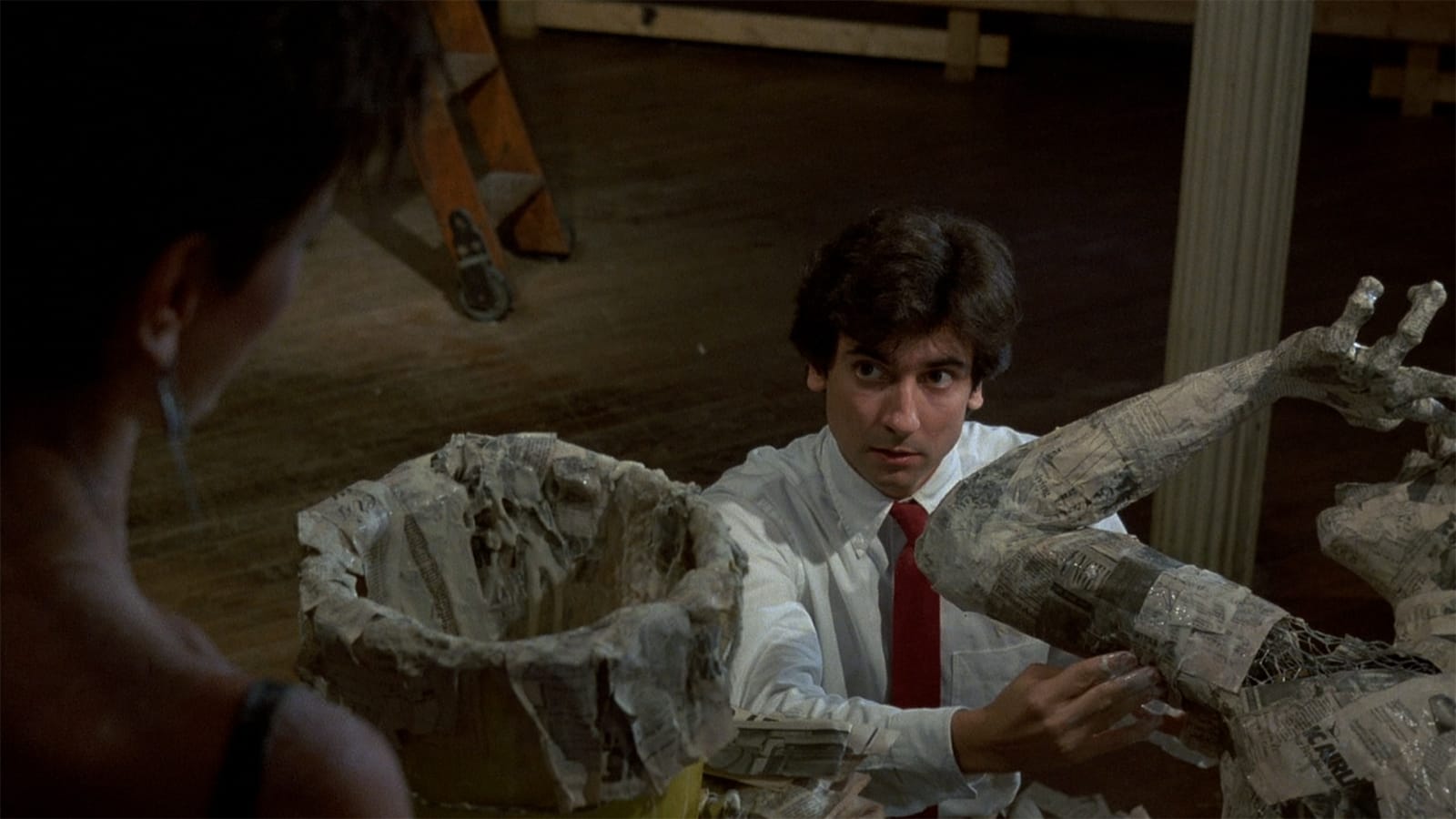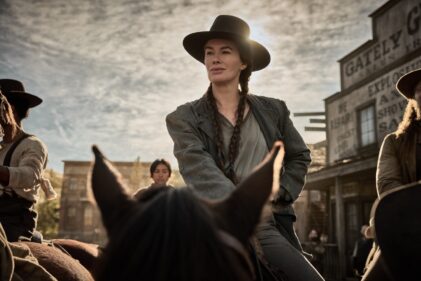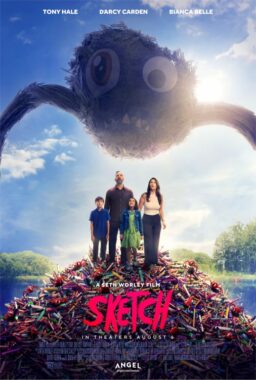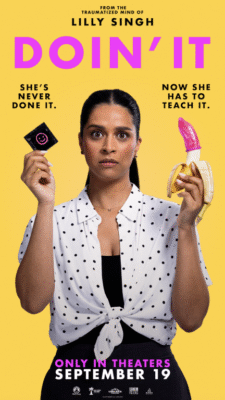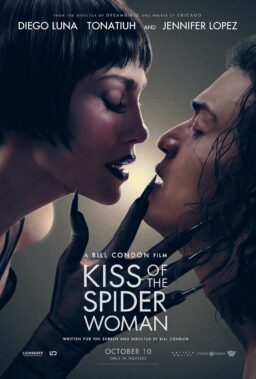I can’t remember when Criterion announced that they would release a Blu-ray of Martin Scorsese’s often-overlooked “After Hours.” But I know it was years ago, well before Criterion released titles in 4K. Well, it has finally arrived, and the decision to wait until a 4K disc could be added was the right one. “After Hours” has never been sharper or more colorful while also adding another layer of darkness and dread over poor Paul Hackett’s predicaments. Those who know the film frame-by-frame (as I do) will not be disappointed.
The film came out on VHS and Beta in the early summer of 1986. At thirteen years old, my first viewing of it would be a day I’d never forget. Nothing would be the same for me. We all have that movie that changed the way we look at the craft of filmmaking, and “After Hours” was mine. I watched it with my dad late at night, and we both enjoyed the weird unpredictability of the thing, but for me, it would eventually become an obsession. From then on, I would be in tune with the technical side of filmmaking in a way I hadn’t been before. I started paying closer attention to complex tracking shots, quick editing, close-ups, dissolves, music use, and surreal lighting choices. This new 4K release has allowed me to unpack my teenage obsession all over again, alongside other films from this era that share similar themes (“Brazil,” “Something Wild,” and “Blue Velvet”).
“After Hours” came about during a particularly heartbreaking time for Scorsese. Paramount had just pulled the plug on his production of “The Last Temptation of Christ,” which put him into a deep depression. At the same time, producers Griffin Dunne and Amy Robinson had this weird, goofy script (originally titled “Lies”) by screenwriter Joseph Minion about a guy having the worst night of his life. Once Scorsese got a hold of it, Dunne and Robinson had to tell their younger, less experienced director that the job was no longer available, to which the gracious artist said, “That’s okay. I don’t want to stand in Martin Scorsese’s way. Let him have it.” (Who was this now-famous director, you ask? Read on).

Thus, Scorsese was off and running on a little comedy he would shoot only at night, efficiently and with an eye toward the characters’ quirky mannerisms and behavior. No violent outbursts of the soul from De Niro or Keitel, no spiritual awakenings, no direct metaphors for Catholicism. Just a poor ‘80s yuppie named Paul (Dunne) trying to go out on a date with a girl he just met (Rosanna Arquette). That bad date spirals into a series of events and run-ins with the nocturnal denizens that populate much of SoHo, all of whom make Paul’s night worse and worse as it goes along. Scorsese and cinematographer Michael Ballhaus let the camera dance around these events in a way that felt like a new visual artist was emerging, and it would all get tied together through Thelma Schoonmaker’s precise and exhilarating editing and Howard Shore’s ominous and quietly sinister score.
The “After Hours” structure has since been copied many times over, both upon its release (“Vamp,” “Adventures In Babysitting,” and “Quick Change” come to mind) but also in recent years (“The Night Before,” “Game Night” and, as Sheila O’Malley’s wonderful essay insert points out, the “Ted Lasso” episode, “Beard After Hours”). Minion’s screenplay was a true original at the time, and it continues to sound fresh, hilarious, and unsettling even today. The character of Paul Hackett always sounds like he has been isolated and insulated for much of his adult life and has entered a world where he does not belong. Every character he meets has their own inner world where they intend to stay, even while he’s in the room with them. He has to react to them in an honest way, but Paul only knows how to be polite, which sometimes is the wrong reaction and ends up costing him a phone call, a ride home, or a place to sleep.
On the Criterion disc, in the documentary “The Look of After Hours,” there is talk of a parallel to Alice In Wonderland, with the yellow cab being the White Rabbit taking Alice down the rabbit hole (the recurring checkerboard pattern in many scenes adds another layer to this). “The Wizard of Oz” is the other key literary reference at work here, both overtly (Marcy’s story of her ex-husband shouting “Surrender Dorothy!” during sex) and subtly. The yellow cab also starts Paul on the yellow-brick road and on a journey where two of the three women (Teri Garr as Julie and Catherine O’Hara as Gayle) are wearing yellow, but the three female characters also share traits with three characters Dorothy meets in Oz: Marcy seems to lack courage. Paul probably sees Julie as someone who could use more of a brain. Gayle has no signs of a heart. And all Paul wants to do is get back home (he just needs to get rid of those yellow “Burglar” signs with his face sketched on them).

In one of the disc’s newer features, Scorsese (speaking with Fran Lebowitz) addresses the issue of the primary female characters here. Lest one thinks that only the women exhibit behaviors that make Paul’s life miserable, the men in the film also give him a reason to hate New York on this particular night: The hot-tempered Tom (John Heard), the leather-bound disciplinarian Horst (Will Patton), the Club Berlin bouncer on a power trip (Clarence Felder), the cantankerous subway attendant (Murray Moston), the waiter who knows all of Marcy’s secrets (Dick Miller, who has a wonderful deleted scene), and of course, Neil and Peppy (Cheech Marin and Tommy Chong, respectively, billed separately for the first time), the burglars who argue over the value of art while unknowingly carrying Paul to either certain doom or his salvation. It’s such a rich tapestry of New York nightlife. I haven’t even yet mentioned the terrific Linda Fiorentino, as Kiki Bridges, the Soho artist and creator of the silly plaster of Paris bagel-and-cream-cheese paperweights that could very well be responsible for this nightmare (Criterion seized on the opportunity to fashion the disc label after one of those paperweights).
I wish Minion were actively involved to offer his perspective on the experience, but if nothing else, I highly recommend catching up with two other films he penned, the cult classic “Vampire’s Kiss” and the needs-to-be-a-cult-classic, “Motorama.” As a screenplay and certainly as a work of cinema, “After Hours” remains a dazzling piece of work that continues to reward with repeat viewings, even if you’ve seen it over a hundred times. This new release will feel like the first time all over again.
Q&A with Griffin Dunne and Amy Robinson
I had an obsession with “After Hours” that started somewhere in middle school and extended through much of high school. It made me notice all of the elements of craft that went into movies from that moment on.
AMY ROBINSON: Well, we have to say to your uber mentor, Roger Ebert, who was a very, very important person in our producorial life and my life as an actor before I was a producer, and he sort of got what we were doing as producers together. He always supported the movies. He was a wonderful person and, in my opinion, a great critic so it’s a pleasure to talk to you on this platform.
Thank you. It was his four-star review that made me curious to rent the film. How involved were you two in the production of this as well as the “Chilly Scenes of Winter” disc that came out recently?
AR: They consulted us on both of them. We did brand new interviews for “Chilly Scenes,” and [director] Joan Micklin Silver had unfortunately passed away. There were some older interviews of us for “After Hours,” but they recorded some new audio over picture. They consulted with us all the way along the line, but they had this idea of doing Marty’s interview a different way, so that was their idea.

Watching the film on a new 4K transfer, was there anything that stood out to you that never stood out to you before?
GRIFFIN DUNNE: I confess I haven’t seen the 4K yet, but I’ve seen some very nice prints of it. I’m always noticing something new. Every time I look at it, I see neighborhoods or a street that is unrecognizable today, which makes me feel quite aged. It just reminds me of where I was then and where I am now. I look at it geographically.
I was gonna ask, now that you’ve had many decades’ distance from the film, how does it play to you now, or to today’s audiences? Do you have any recent experiences watching it with an audience today?
GD: We attended a screening at the Paris Theater, which is a theater in New York where they show classic films, and it was a trip to see “After Hours” on the marquee and with a packed house. I got the impression the audience was quite young, that a lot of them had never seen it before. While there are anachronisms with no cell phones and various logical ways that Paul Hackett could’ve gotten home, the anxiety was transcendent. The humor, the anxiousness played just as well or just as fresh.
AR: It was a younger audience, and there were others like you who had seen it many, many times, but they had never seen it on the big screen before at an iconic movie theater. So, I think it was a very special night. Griffin and I also saw it at a big theater called the Metrograph. The Safdie brothers asked to screen it at the Metrograph because it was a very key movie in their life, and “Good Time” had a lot to say in relation to “After Hours.” It’s fun to see its life extended.
The last time I saw this movie, it was in 35mm at the Music Box about five years ago. It was part of a series called “Is It Still Funny?” It was a series of older comedies being looked at in a modern context of “Is it still funny? Was it ever funny? Is it even funnier?” For “After Hours,” the question came up, “Is it even a comedy”? I think it’s a comedy born out of unbearable tension, quirky behavior, and a series of unfortunate events, but some are just counting how many direct laughs it’s going for. What are your thoughts?
AR: I think the best comedy is born out of reality, and there is a lot of reality in the movie in the sense that everyone has had a really, really bad night. This might be the worst night that you ever had, but it was never played for comedy. It was played for realism and the comedy coming out of realism, which is very much a hallmark of Marty as a director and, I think Griffin as an actor as well.
GD: It is a comedy, but it also is an entirely original way to get laughs. It hadn’t really been done. It’s kind of a genre unto itself that has been imitated or has influenced a lot of other movies since, but we always found the situations hilariously funny because it came out of real situations that were incredibly awkward and anxiety-ridden. In the earlier screenings, people had a hard time, especially when we didn’t have the ending when Paul ended up in the back of the van with no release. Sometimes it was just too much for an audience, just feeling anxious and worrying about this guy and whether he would get home or not. But I think it started a genre of anxiety-driven comedies.
In one of the interviews on the disc, you mentioned that you had talked to a young Tim Burton about directing the film. Do you remember if he had any specific ideas for how he would have done the film? Visual ideas or anything like that?
AR: Well, he directed a tiny little line-drawing cartoon called “Vincent,” which you may have seen. Griffin and I saw it and were really impressed with it. We tracked him down, and he already had a young, smart agent representing him named Bobby Thompson. We saw him at Disney, where he worked with the animators, but he also came to an apartment that I lived in that we used as an office, too, in New York. He had big art notebooks, and he had all the things he later did, “Edward Scissorhands,” and all those amazing ideas that came out of Tim’s head. And we felt that he would create a world, but we never got far enough. Partially because we couldn’t raise the money with him. Secondly, because Marty had been sent the script first, it turned out that “Last Temptation” had fallen apart, so he was interested. He was very gracious about it, but it always stayed in our minds, “What would Tim Burton’s ‘After Hours’ have been”? You know, Marty’s “After Hours” is kind of sublime and we’re thrilled that it exists in the world, but it’s fun to fantasize about what the Tim Burton film would have been.
Griffin, was there anything from the experience of working with and watching Scorsese or any wisdom you took with you when you started directing?
GD: Yeah, very much. I had never worked with a director who seemed to have so much fun directing the actors and being very loose, and letting the actors do what it took to get to where they wanted. We had takes where we had end slates where you would cut after. You would use the slate after the take was over and just start making up and improvising until you get to that place, and then you start the scene. So, that was a technique. His joy and enthusiasm for what the actors were doing. When we looked at dailies, we would hear Marty laughing in the background that the mixer would have to mix out. It was an influence to just have fun, to be completely loose and let the actors relax and if we have to do it again, we’ll do it again, because it was fun to do it the other time.

John Heard passed away unexpectedly in 2017. Do you have any stories you can share about working with him on this?
GD: Well, it was our second time working with him. Amy and I pursued him on “Chilly Scenes of Winter.” Joan Silver, who also directed it, was also a huge fan. We suggested him to Marty for this role. And John had kind of a wild reputation. (Marty) expressed his concern, and John said, “I’m going to be on my best, best behavior,” and he was. He was focused, funny, and intense.
AR: And he’s a brilliant actor. His career didn’t really go, but I don’t think he had the desire to become a “star.” He was on the quirkier side of life. I just loved John, and I’m very sad that he’s gone. I think he brings what you were originally talking about to his scenes with Griffin in “After Hours.” When Griffin finds out that Marcy was his girlfriend and the way he kicks the cash register, the violence there, and Griffin’s reaction, I could watch that over and over again. The two of them, I love it.
There’s also a wonderful deleted scene between the two of them on the Blu-ray.
GD: Oh, does it? I haven’t gotten my copy yet.
What’s the first feeling/emotion/thought that comes to mind when you look at “After Hours”?
AR: It was a lot of fun. It was a great adventure. It was a roller coaster ride, a good one with no cracks in it. Not that there weren’t tough days or hard days. It was a fabulous ride.
GD: For me, it was a starting point in relationships I would have with people, both in front of the camera and behind the camera, personally and professionally, that would follow me for years, to this day. It was a real awakening. I can’t think of a better word than Amy used. It was fun. It was insanely fun making this movie.
AR: I think as producers, Griffin and I were proud and happy to bring John Heard to the table, for Marty to love him. Robert Plunket, we brought him to the table. Michael Ballhaus, who shot our last movie, “Baby, It’s You,” right before this. And Jeffrey Townsend, our production designer. So, it was very heartening to bring parts of our family to the wonderful filmmaking family that Marty has.

